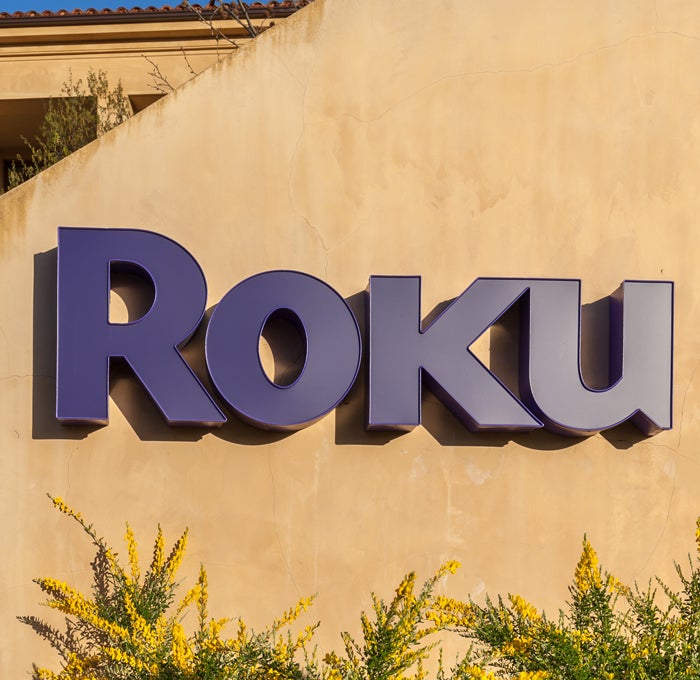As a smart TV company, Roku has to juggle the needs of viewers and advertisers, which are often at odds.
The company’s full-year earnings for 2023 suggest it’s successfully striking this balance.
Total revenue last year was $3.5 billion, up 11% YOY, while its platform business, which includes ad sales and streaming service distribution, generated $3 billion, a 10% YOY increase.
Looking ahead, Roku’s priority is to keep growing its platform business, CEO Anthony Wood told investors during the company’s Q4 earnings call on Thursday.
But to achieve this, Roku must also continue scaling its user base, its viewer engagement and its slate of ad offerings for brands.
Stick around …
Roku added 10 million global active accounts in 2023, bringing its total to 80 million, which is the same growth rate it experienced in 2022. In other words, user growth was flat.
But Q4 was good. Roku saw a spike in user growth and engagement during the quarter that accounted for 4.2 million of the 10 million new accounts. As for engagement, global streaming hours were up 21% YOY.
Roku credits its new smart TVs and additions to its content library, including sports, with accelerating account growth at the end of last year. In November, Roku launched new genre-based content hubs on its platform that aggregate shows related to food and home improvement, which also helped raise streaming hours.
Content discovery is a real problem for viewers, so when relevant content is curated for them, they spend more time watching TV, which opens the door for more monetization opportunities, Wood said.
In other words, bring on the ads.
… To see more ads
Specifically, Roku is laser-focused on turning its home screen into an ad hub.
The Roku City screensaver is the first thing that 80 million global account holders see when they turn on their TVs, Wood said.
Last summer, Roku opened up ad inventory on its screen saver to brands across all verticals. These ad units were previously available only to media and entertainment advertisers.
Around the same time, Roku also rolled out full-screen interactive ad units called showrooms designed to encourage viewers to click around a brand’s product catalog.
And Roku has dialed up brand and title sponsorships, including for its new content hubs. For example, around the holidays, Coca-Cola exclusively sponsored Roku’s “All Things Food” page, which featured an ad promoting a deal for Coca-Cola drinks through DoorDash.
According to Roku’s shareholder letter, Q4 was the company’s “highest-ever quarter of sponsorship spend.”
Rebound (and down)
In fact, the fourth quarter represented a “solid rebound in video advertising” overall, according to Charlie Collier, president of Roku’s media business.
For the sake of comparison, Q3 was more like a semi rebound due to the lingering aftermath of the twin Hollywood strikes that slashed media and entertainment ad spend.
Roku’s platform revenue grew 13% YOY in Q4 versus just 10% growth for all of 2023.
However, average revenue per user was down 4% YOY to $39.92 because more account growth is coming from international markets that monetize at lower rates, said CFO Dan Jedda.
That dip might explain why Roku shares dropped about 14% during after-hours trading on Thursday.
Open relationships
But Roku has other ways to grow ad revenue. It’s building new partnerships with demand-side platforms, retail media networks and alternative measurement providers.
“Demand diversification continues to be a huge priority for us. We made real progress expanding our relationships with third-party platforms [last year],” Collier said, including with DoorDash and Instacart.
Roku has also been making its inventory available in more DSPs. Collier said the company is now integrated with “all the major DSPs,” though he didn’t name them.
“As a result, we’ve increased programmatic ad spend and our roster of advertisers,” he said.
Last but not least, Collier called out recent integrations with alt measurement providers Comscore and iSpot – although, interestingly, he didn’t name drop the embattled VideoAmp, which is also one of Roku’s partners. Roku is striking these deals because new measurement options could help attract brands looking for Nielsen alternatives.
In the meantime, Roku continues its quest to get its TV hardware into as many homes as possible. It recently started selling its proprietary TV sets, which launched last year exclusively in Best Buy stores, through Costco and Amazon.













